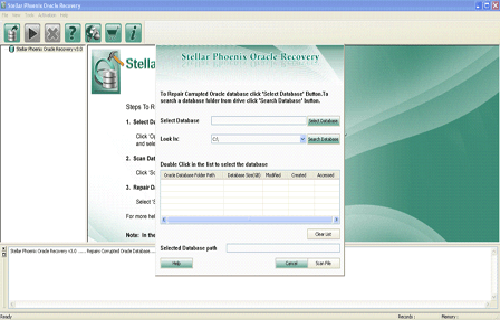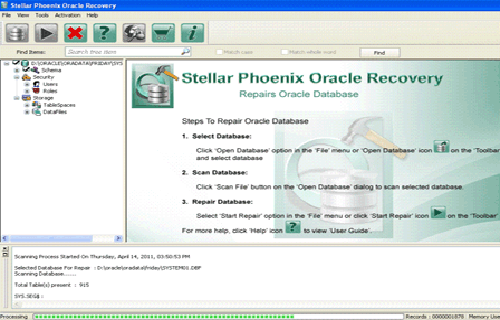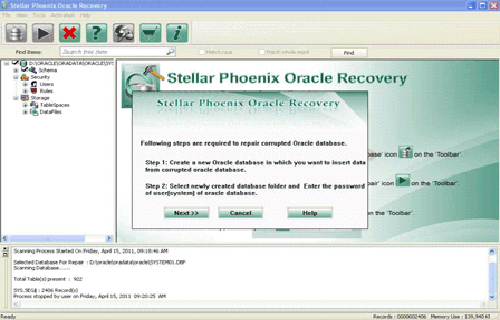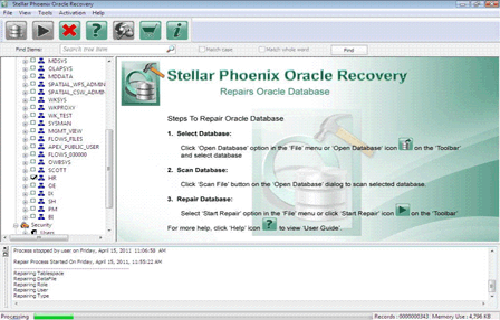How to Recover Oracle 10G Database Using Data Files, Redo logs, Control files during OS failure
Published by Jacob Martin on November 17, 2014
There are times where we have noticed that operating system does not respond or work due to something miss happening or miss handled with the system and system have crucial data which you do not want to lose at any cost and you do not have backup for it. So, in this blog you will learn the technique on how to recover Oracle 10G database on such situation. It is very simple and easiest way to restore the database. If you come across something like this and you don’t have backup of your file then you don’t have to worry, simply follow the below mentioned steps to recover your database:
To recover the database we need following files:
1 – Database datafiles 2 – Control files 3 – Redologs 4 – Parameter files
5 – Other database related files
Database datafiles
Database data files are physical files that are saved on secondary memory. These files store the physical data. Database data files are those files which are written by only Oracle DB Writer. These data files are related with Oracle Tablespaces which are logical containers for table and indexes. These database datafiles are generally stored in path D:oracle product10.2.0oradatasid
Example of datafiles:
DR01.DBF, INDX01.DBF, TOOLS01.DBF, TEMP01.DBF, SYSTEM01.DBF, USERS01.DBF, RBS01.DBF & .ORA
Control Files:
Control files are binary files of the database which contains the important information about the database. The control file stores the information like database log file, database name. Oracle will not work if there are no Control files. Since the control files are very much essential and Oracle allows you to keep duplicate copies of control files. Generally control files are located on the path D:product10.2.0oradatasid
Example of Control Files
CONTROL01.CTL, CONTROL02.CTL,CONTROL03.CTL
Online redo logs concepts:
Online Redo logs are like a tape recorder which tracks every change in the Oracle database. As and when there is any changes occur, they are frequently recorded in the online redo logs. Oracle needs two online redo logs which are allocated to the database. Oracle writes the redo logs to the first log and when it gets full then it record the log to the second one. Redo logs are generally located on the path: d: oracle product10.2.0oradata sid
Examples of Redologs
REDO01.LOG, REDO02.LOG, REDO03.LOG
Oracle Parameter file Concepts:
Parameter file (also known as init.ora) are those which store the configuration information for the database to use at the start up time. The parameter file store information like how much Ram the database is using, where to look for control files, where to write alert file, trace file and whole host of other information. Most of the times Oracle database does not start without the parameter file. Oracle permits you to have server side parameter file (known as SPFILE) or a manual parameter file (known as PFILE). Generally the parameter file is located on the path: D:oracle product10.2.0adminsidpfile init.ora
Steps for recovering the database:
Step 1 – Once you install the fresh operating system you will need to install oracle 10G on the same hard drive where the Oracle was installed on your system earlier for easy recovery.
Step 2 – But before you install the new Oracle engine take the backup of all the required files such as Database datafiles, Control files, Redo logs, Parameter files and other related files.
Step 3 – Now you have to just place the respective files on the below mentioned path:
Parameter files on location (init.ora) – D:oracle product10.2.0adminsidpfile and
PWDSID.ora on – D: oracleproduct10.2.0db_1database
Step 4 – After that just restart your Oracle and run the SQL console.
 |
 |
 |
Tool to Recover Oracle 10G Database
If, you are not able to recover the Oracle 10G Database even after following above steps , then you can opt for appropriate and worldwide famous recovery tool that is Oracle File Repair tool. With this tool you can easily recover all files and database objects from your Oracle database. It deeply scans the database and if there is any error or corruption it fix and then recover all possible data. It not only support Oracle 10G version but it also support all version of Oracle. So, free download Oracle file repair tool to fix and recover Oracle database.
Steps to Recover Oracle 10G Database
Step 1: Search Initial screen of Stellar Phoenix Oracle Recovery with a pop-up window showing options to select or search corrupt Oracle databases in your computer.
Step 2: Click Scan File to initiate the scan process after selecting the oracle database. The recoverable database objects get listed in left-side pane.

Step 3: Click an object to see its preview.

Step 4: : Click Start Repair in the icon bar to start the repair process. A pop-up window is displayed which show the steps needed to perform further. Click next and continue.

Step 5: Give the user name, password and path of the blank database where you want to save the repaired database objects.

Step 6: Repairing and restoring various database objects after establishing a connection with blank oracle database.

28 Total Views 5 Views Today

